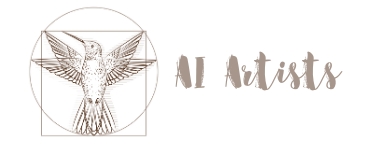AI Art, once a futuristic concept, has now become a revolutionary force in the creative world. From hyper-realistic portraits to surreal landscapes, AI-generated art is everywhere, captivating audiences with its innovative approach. But how does AI art work exactly? Let’s unravel the mystery behind the algorithms and technologies that power these digital masterpieces.
The Basics of AI Art
At its core, AI art is created using machine learning algorithms that analyze data and generate new images based on that information. Unlike traditional art, where a human creates directly on a canvas, AI art begins with datasets. These datasets typically include thousands or even millions of images that teach the AI to recognize patterns, styles, and elements like color, composition, and texture.

The most common technology behind AI art is Generative Adversarial Networks (GANs). GANs involve two neural networks: a generator and a discriminator. The generator creates new images, while the discriminator evaluates whether these images resemble those in the training dataset. Through this adversarial process, the AI becomes better at creating realistic or stylistically unique images over time.
Key Technologies Powering AI Art
1. Neural Networks
Neural networks are the backbone of AI art. Modeled after the human brain, these networks consist of interconnected nodes that process and analyze data. By identifying complex patterns, neural networks can mimic artistic styles, recreate textures, and even generate completely novel compositions.
2. Style Transfer
Style transfer is another fascinating AI technology. It allows AI to apply the visual style of one image to the content of another. For instance, an AI could take the color palette and brushwork style of a Van Gogh painting and apply it to a modern photograph, creating a unique blend of classical and contemporary art.
3. Text-to-Image Models
Recent advancements have introduced text-to-image generation models, such as DALL·E and Stable Diffusion. These models use natural language processing (NLP) to interpret written descriptions and transform them into detailed visual outputs. For example, typing “a futuristic city under a glowing purple sky” can yield stunningly specific and imaginative results.
The Process of Creating AI Art
Creating AI art typically involves several steps:
- Training the AI: Large datasets are fed into the AI to help it learn different artistic elements. This process requires significant computational resources.
- Generating Art: Using pre-trained models, users input prompts or select styles to generate images.
- Refining Results: Many AI platforms allow users to fine-tune the output by adjusting parameters like style intensity, resolution, and focus.
Applications of AI Art
AI art is reshaping industries beyond traditional art. Here are some of its key applications:
- Entertainment: Creating visual effects, concept art, and video game designs.
- Marketing: Producing unique branding materials and eye-catching social media content.
- Personal Projects: Helping hobbyists and non-artists bring creative ideas to life.
Challenges and Ethical Considerations
Despite its innovations, AI art raises questions about authorship and originality. Who owns AI-generated art—the developer of the algorithm, the user, or the AI itself? Additionally, concerns about the misuse of AI-generated content, such as deepfakes, highlight the need for ethical guidelines in the field.
AI art represents a fascinating intersection of technology and creativity. By leveraging advanced algorithms and neural networks, AI can produce stunning works that were once unimaginable. Understanding how AI art works not only demystifies the process but also opens doors for exploring its vast potential in various domains. Whether you’re an artist looking for new tools or simply curious about the technology, AI art offers endless possibilities to inspire and innovate.
